Gardeners are a generous bunch, always sharing seeds, plants and especially the produce they’ve grown themselves. But that generosity ends when it comes to pest insects. Few things are as maddening to a gardener as seeing bugs chowing down on rows of lovingly tended vegetables. The end of the growing season is a good time to reflect on the successes (those lovingly tended vegetables), the problems (pests) and how to have a healthier, more productive garden next year.
One organic technique that controls pest insects without harmful sprays is trap cropping. A pest that is attracted to a particular plant is lured away by plants that are even more appetizing. The insect ignores the main plants in favor of the decoy. Insects are then handpicked, or the trap crop destroyed.
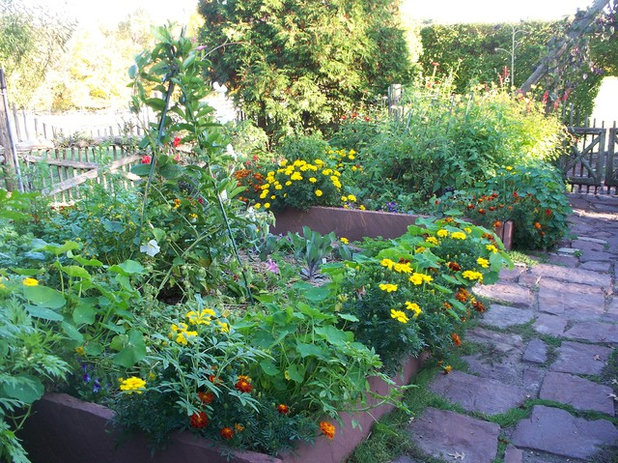
Dear Garden Associates, Inc.
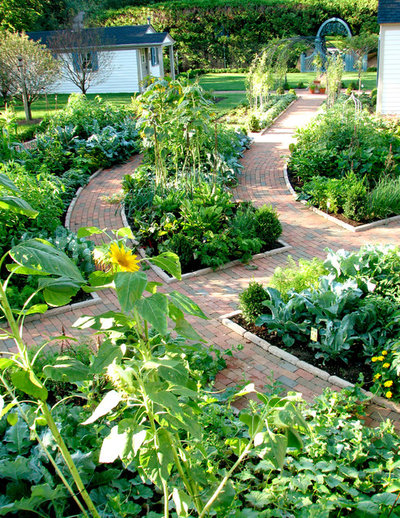
The Brickman Group, Ltd.
“Trap cropping is a form of companion planting,” says Jessica Walliser, author of the forthcoming
Attracting Beneficial Bugs to Your Garden: A Natural Approach to Pest Control. “However, the idea isn’t to repel the insects, it’s to attract them to plants you are willing to sacrifice in order to keep the insects away from the plants you want.”
If you would like to try trap cropping, here are some guidelines:
• Only use a trap crop if you’ve had a destructive pest in the past.
• Don’t try it as a precaution; you may invite pests you haven’t had yet!
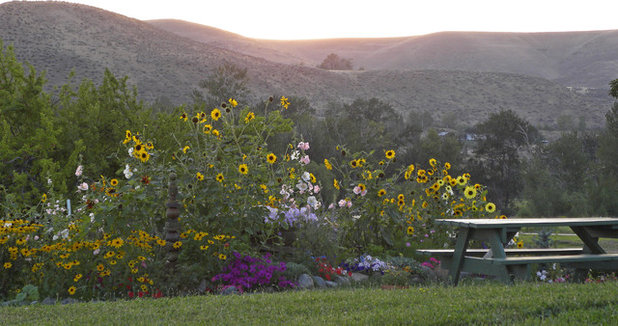
Sarah Greenman
Farmers usually grow trap crops on the perimeter of their fields. In the home garden, Walliser recommends planting them at least 10 feet from the main crop. Here is a list of crops, their most destructive pests and the trap crops that can be used to control them.
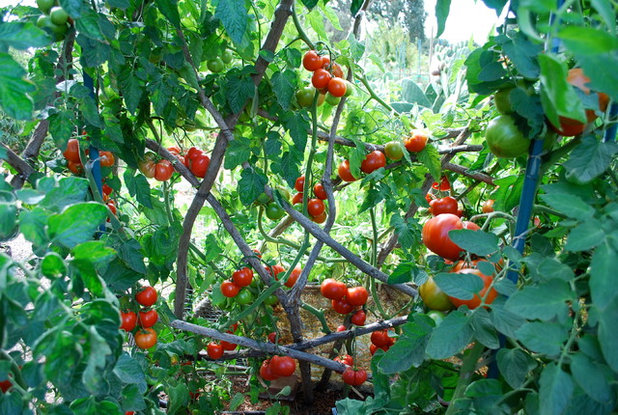
Steve Masley Consulting and Design
Tomatoes
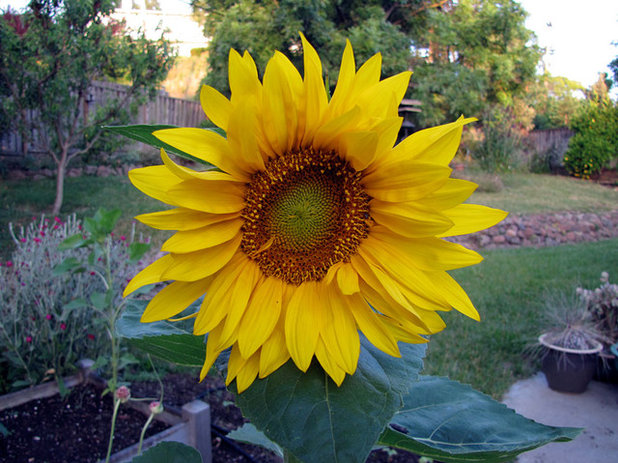 The pest
The pest: Leaf-footed bugs (
Leptoglossus phyllopus)
The victim: Tomatoes
The trap crop: Black oil sunflowers (shown). Sunflowers also attract birds, which eat the seeds and the pests.
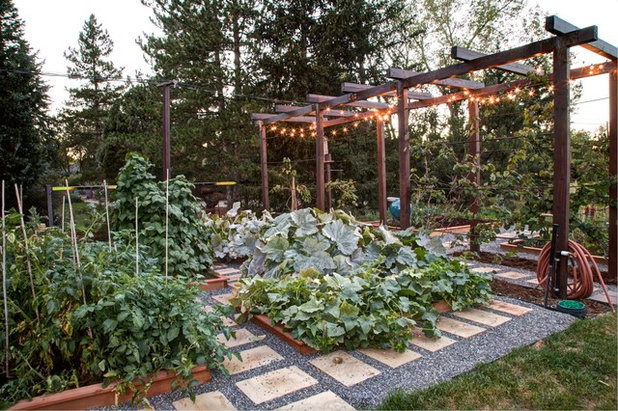
Watermark Landscapes
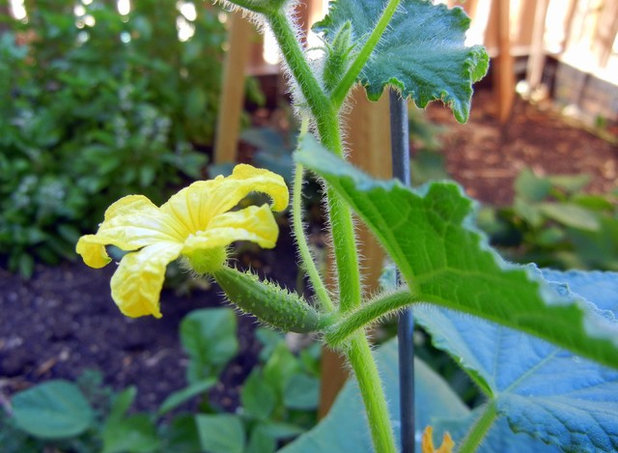
Noelle Johnson Landscape Consulting
Squash blossom
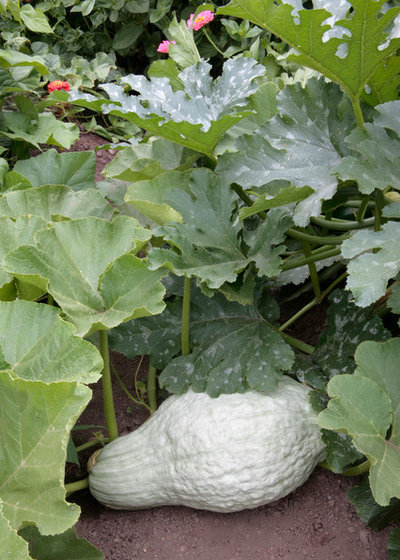
Fifth Season Landscape Design & Construction
The pests: Squash bugs (
Anasa genus) and squash vine borers (
Melittia cucurbitae)
The victims: Squash, particularly butternut and summer squash; cantaloupe, watermelon
The trap crop: More squash, especially blue hubbard (shown).
Plant blue hubbard two weeks before planting your main crop to give the plants a head start on attracting pests.
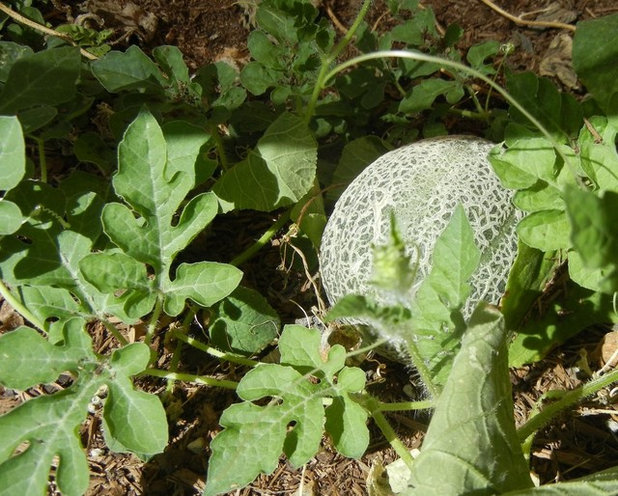
Noelle Johnson Landscape Consulting
Cantaloupe
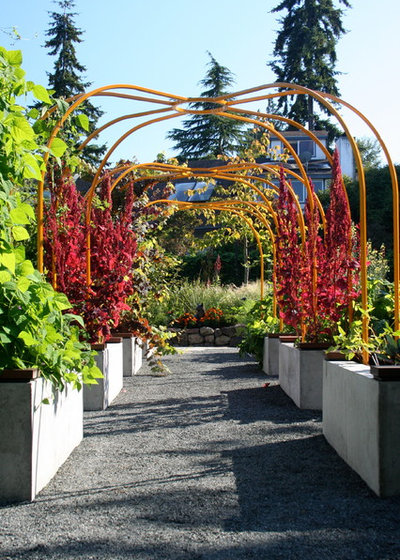
Berger Partnership
The pest: Cucumber beetles (
Diabrotica and
Acalymma genera) Controlling cucumber beetles is especially important, since cucumber beetles not only eat plants, they transmit bacterial wilt, which kills the plants.
The victims: Cucumbers and other cucurbits, including cantaloupe and watermelon, squash, pumpkins and gourds
The trap crops: Amaranth, blue hubbard squash, zucchini
Shown: Amaranth
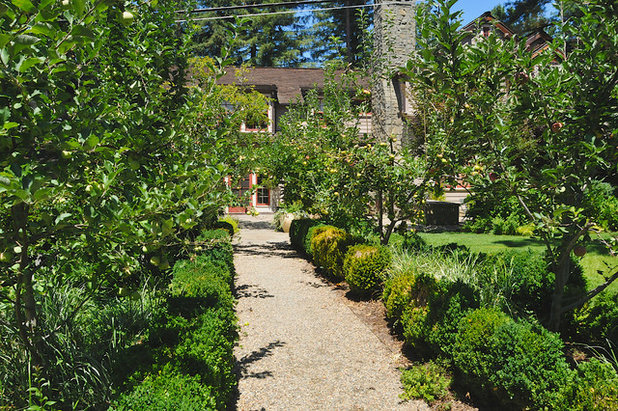
AFLA-Landscape Design
Apples
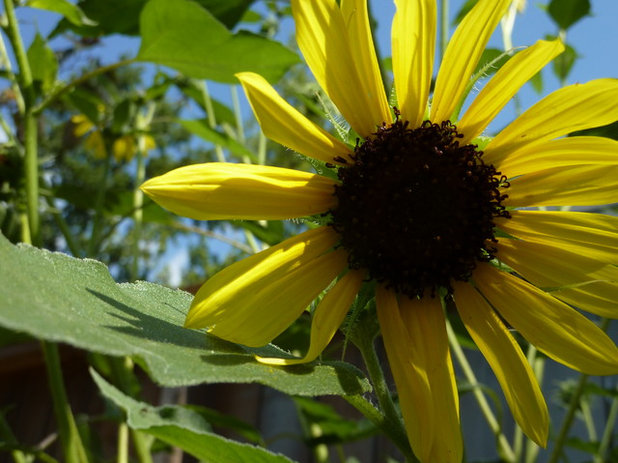
Nature's Realm
The pest: Stink bugs (many species of the order
Hemiptera)
The victims: Apples, peaches, tomatoes, peppers, corn
The trap crops: Black oil sunflowers (shown), amaranth, buckwheat
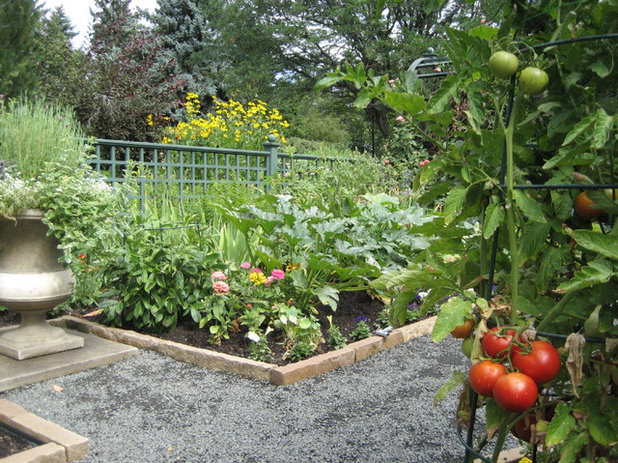
Leslie Ebert
Keep the trap crop healthy so it’s appealing to pests; they’ll just move to your main crop if it isn’t. Don’t wait for pest populations to build up, remove and destroy insects and insect eggs as you see them so they don’t reproduce or reach numbers that force some to your main crop.
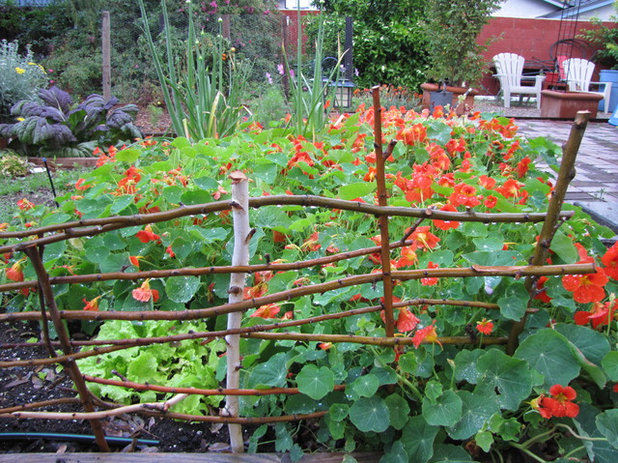
Jean Marsh Design
Trap crops won’t work on all insects, and should always be used in conjunction with other control methods. It is just one piece of an entire strategy of organic gardening that includes planting a diverse range of crops, choosing pest-resistant plant varieties, crop rotation, attracting beneficial insects and using cover crops.





